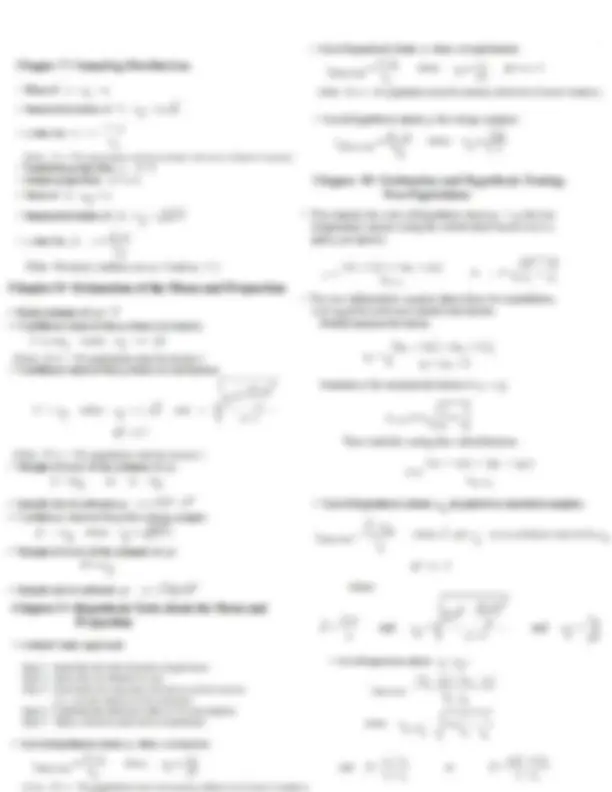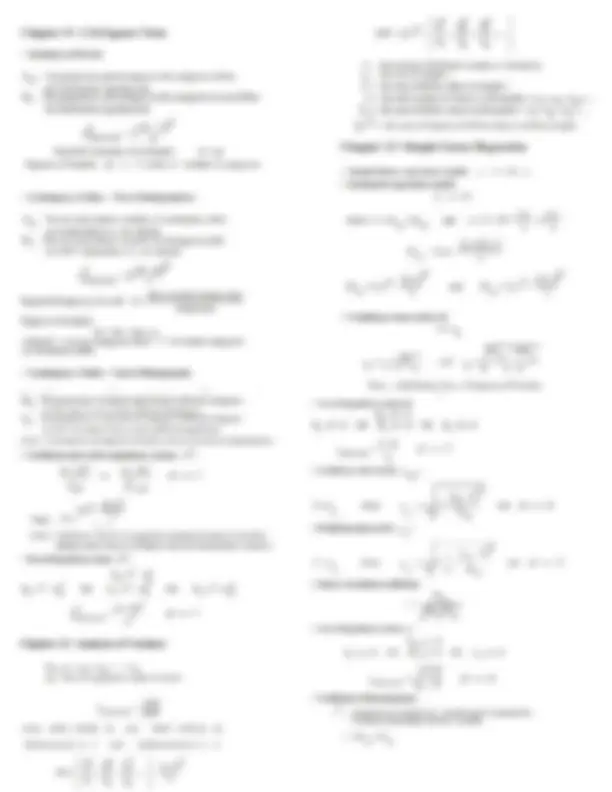




Study with the several resources on Docsity

Earn points by helping other students or get them with a premium plan


Prepare for your exams
Study with the several resources on Docsity

Earn points to download
Earn points by helping other students or get them with a premium plan
Community
Ask the community for help and clear up your study doubts
Discover the best universities in your country according to Docsity users
Free resources
Download our free guides on studying techniques, anxiety management strategies, and thesis advice from Docsity tutors
Original Assignment MATH215 with all exercises description GRADED 100%
Typology: Assignments
1 / 4

This page cannot be seen from the preview
Don't miss anything!



Chapter 2 • Organizing and Graphing Data
- Relative frequency of a class = f ∕ ∑^ f - Percentage of a class = (Relative frequency) × 100% - Class midpoint or mark = (Upper limit + Lower limit)∕ 2 - Class width = Upper boundary − Lower boundary - Cumulative relative frequency
=
Cumulative frequency Total observations in the data set
Chapter 3 • Numerical Descriptive Measures
σ^2 =
∑ (^) x^2 − (
(∑^ x ) 2 N ) N
and s^2 =
∑ (^) x^2 − (
(∑^ x ) 2 n ) n − 1
where σ^2 is the population variance and s^2 is the sample variance
σ = R
∑ (^) x^2 − (
(∑^ x ) 2 N ) N
and s = R
∑ (^) x^2 − (
(∑^ x ) 2 n ) n − 1
where σ and s are the population and sample standard devia- tions, respectively
σ μ
× 100% or
s x
σ^2 =
∑ (^) m^2 f − (
(∑^ mf ) 2 N ) N
and s^2 =
∑ (^) m^2 f − (
(∑^ mf ) 2 n ) n − 1
σ = R
∑ (^) m^2 f − (
(∑^ mf ) 2 N ) N
and s = R
∑ (^) m^2 f − (
(∑^ mf ) 2 n ) n − 1
Pk = Value of the (^) (
k n 100 )
th term in a ranked data set
=
Number of values less than xi Total number of values in the data set
Chapter 4 • Probability
P ( Ei ) =
Total number of outcomes
Number of outcomes in A Total number of outcomes
P ( A ) =
f n
P ( A and B ) P ( B )
and P ( B ∣ A ) =
P ( A and B ) P ( A )
Adapted from Prem S. Mann, Introductory Statistics, 9th ed. (Hoboken, NJ: Wiley, 2016) [VitalSource]. This material is reproduced with the permission of John Wiley & Sons Canada, Ltd.
Prem S. Mann • Introductory Statistics, Ninth Edition
p ˆ − p σp ˆ
Chapter 8 • Estimation of the Mean and Proportion
x ± zσ (^) x where σ (^) x = σ ∕√ n
x ± ts (^) x where s (^) x = s ∕√ n
E = zσx or t s (^) x
n = z^2 σ^2 ∕ E^2
p ˆ ± z s (^) p ˆ where s (^) p ˆ = √ p ˆ q ˆ∕ n
E = z s (^) p ˆ where s (^) p ˆ = √ p ˆ q ˆ∕ n
n = z^2 pq ∕ E^2
Chapter 9 • Hypothesis Tests about the Mean and Proportion
z =
x − μ σ (^) x
where σ (^) x =
σ √ n
t =
x − μ s (^) x
where s (^) x =
s √ n
z =
p ˆ − p σp ˆ
where σp ˆ = A
pq n
n Cx =^
n! x !( n − x )!
n Px =^
n! ( n − x )!
Chapter 5 • Discrete Random Variables and Their Probability Distributions
σ = √∑^ x^2 P ( x ) − μ^2
μ = np and σ = √ npq
P ( x ) = r^
Cx N − r Cn − x N Cn
λx^ e − λ x!
μ = λ , σ^2 = λ , and σ = √ λ
Chapter 6 • Continuous Random Variables and the Normal Distribution
x − μ σ
Chapter 7 • Sampling Distributions
x − μ σx